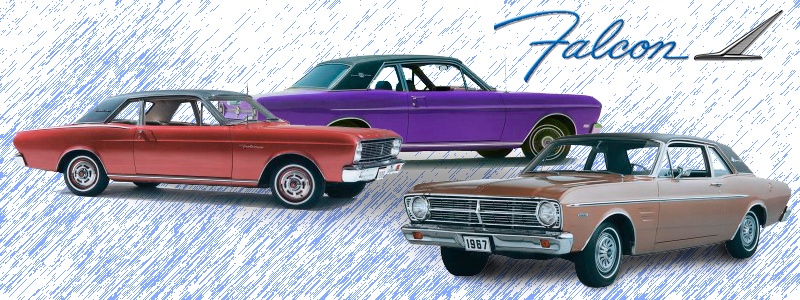Australian’s can thank Charles Smith for ensuring the country had a worthy competitor to the ever popular Holden’s of the 1960’s. Prior to 1955, Ford Australia had been assembling British made Zephyr’s, but in 1955 the decision was made to manufacture the Zephyr entirely in Australia. In 1958 Smith, then Ford Australia’s managing director, took a trip to the US and, upon seeing mock-up’s for the new compact Falcon being designed for the US and Canadian markets, quickly realised this was much better suited to Australia than the dowdy Zephyr. Two years later the XK Falcon made its debut, and became an instant success, in many ways appearing far more modern that the FB/EK Holden’s that were still sporting 1950’s style tail fins.
Both the XK and its successor, the XL, were entirely US designs, although some modifications were made to ensure suitability to Australian driving conditions. Australian designers continued to look at ways of improving the car, particularly in light of some minor reliability issues mainly relating to the tough Aussie conditions the cars were operating in. Changes ushered in on the XM included modified front and rear
suspension layouts and improvements to the braking system, clutch, rear axle, engine mounts and
exhaust. To prove just how thorough the design team had been, Ford management (under the leadership of Deputy Managing Director Bill Bourke) devised a very clever marketing initiative, the Falcon XP “Durability Run”.
Five Falcon’s were pushed to the limit around Victoria’s You Yang’s proving facility, the goal was to rack up an incredible 70,000 miles at an average speed of 70 miles per hour! Despite the audacity of the undertaking, and the fact that some of the cars rolled, after 8½ days all five would finish, with an average speed a little over 71 mph. Little wonder the XP would take out that years “Wheels Car of the Year” award. The XR was to follow, ushering in the era of the GT, but by 1971 the US had taken the decision to drop the Falcon from it’s line-up. More than up to the challenge, Ford Australia were to design the wonderfully modern XA, arguably the first All Australian Falcon (albeit that Ford designers had spent the summer of ’68 working in the US on a clay model). Improvements such as four-wheel disc
brakes were added to subsequent XB and XC models, the XC bringing Ford arguably Mount Panorama’s most famous victory in 1977.
Leading for most of the race,
Alan Moffat’s (number 1) car started to experience mechanical problems and was limping to the finish. Colin Bond, following in the number 2 car, quickly closed the gap. In a remarkable display of sportsmanship he remained behind Moffat, riding as wingman to ensure Ford would take out a 1–2 victory, and the ultimate photo opportunity.
Also see: Bathurst Memorable Moments |
The Ford Falcon Story |
The History of Ford (USA Edition)



